Home / Understanding Truck Tires: Load Ratings and Sizes
Your truck’s tire specs give you more information than you realize in the alpha-numeric code on the side. Learn to read and understand what these letters and numbers mean for your tires’ truck load index, speed rating and size. Understanding these values will make you a better consumer when choosing tires for your truck.
For help selecting which truck body is right for your needs, click here to see all of Reading’s truck bodies.
If you take a close look at a tire, you will find a large amount of information. Everything from the manufacturer’s name to the tire size and load rating appears on the sidewall. Interpreting these numbers requires you to know what values to look for and their meanings.
On the sidewall, you will find the tire’s type, the width, aspect ratio, construction, wheel rating, load index and speed rating. You can identify the values based on their position relative to each other and how many numbers or letters they have. The Tire and Rim Association standardizes these values for all American tire manufacturers.
Some tires may also have Uniform Tire Quality Grading, UTQG, which refers to information for traction and temperature grades. AA traction grades perform best in wet conditions, and the classes go down in performance — AA, A, B and C. Temperature categories refer to how well the tires dissipate heat at various speeds. Those rated with A perform well at speeds over 115 mph. B-rated tires operate best between 100 mph and 115 mph, while C tires remove heat best at speeds between 85 mph and 100 mph.
The first part to look for is the string of letters and numbers that may start with P, LT or no letter. For example, P235/75R15 or LT215/65R15. Manufacturers put a lot of information into this alpha-numeric code — the tire type, width, aspect ratio, construction and tire diameter.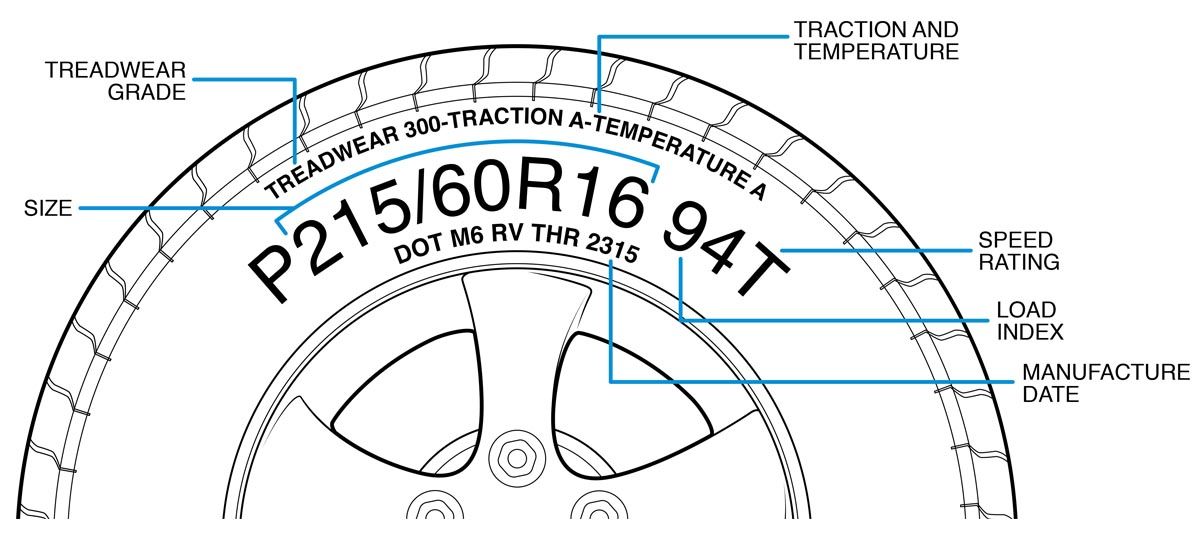
Next to this extended code, you will also see the load index and speed rating, both of which you must know to find the right tires for your loaded work truck.
To make the most of this information, you need to understand what the tire size information means as well as the load ratings and speed information.
The tire size typically starts with a letter indicating the type and ends with a two-digit number, giving the rim size. Between these parts, you will see additional information about the tire size and construction.
The first letter represents the type of vehicle you should install the tire on. P indicates a passenger vehicle or light-duty truck. Generally, these tires require lower pressures than other tires. LT designates a light-duty truck, but these often accompany larger 3/4 and one-ton pickups. If there is not a letter at the beginning, the tire is a Euro-Metric tire, usually used on passenger vehicles.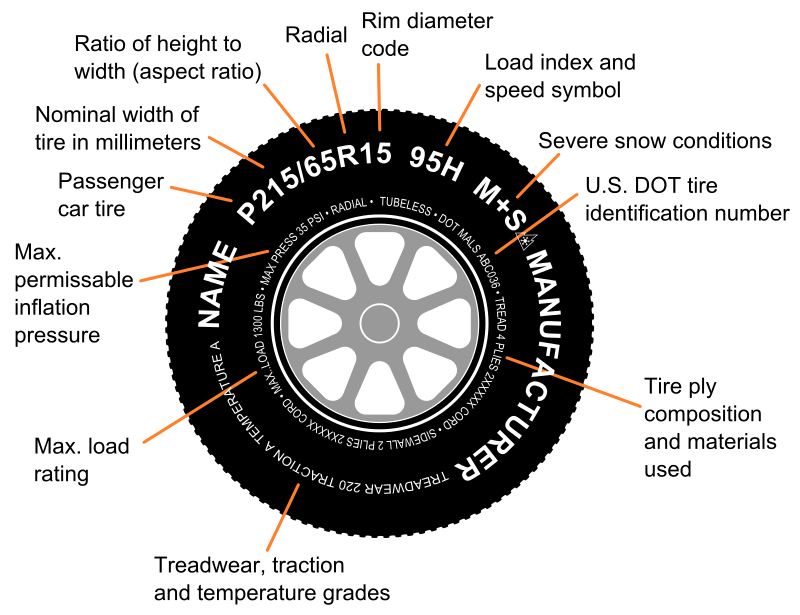 In the example P235/75R15, the P means this tire fits onto a passenger vehicle.
In the example P235/75R15, the P means this tire fits onto a passenger vehicle.
Look at the three numbers after the letter or the first three numbers in front of a slash mark if your tire does not have a letter at the beginning. These numbers give the measurement of the tire’s width from sidewall to sidewall in millimeters. Most tire measurements come from the metric system, regardless of the company making the tires. The example of P235/75R15 has a width of 235 millimeters between sidewalls.
After the slash mark, you will see a two-digit number. This value refers to the aspect ratio, which is the percentage of the sidewall’s height to its width. In the example tire, P235/75R15, the 75 is the aspect ratio. This tire’s sidewall height measures 75% of the width of the sidewall.
Following the aspect ratio, you will see one of three letters — R, B or D. This letter tells you about the tire’s construction. An R designates radial tires, which have their internal cords laid at 90-degree angles to the tire’s centerline.
An R designates radial tires, which have their internal cords laid at 90-degree angles to the tire’s centerline.
Bias-ply tires have a D in this position to indicate their diagonal design. On these types of tires, the cords cross each other at 30 to 45-degree angles. While once common early in the 20th century, bias-ply tires no longer dominate the market. They have been replaced by longer-lasting, more comfortable radial tires.
Belted tires have a B to designate their format. These tires mix the diagonal design of bias-ply with added belts inside the construction. While rare, these have applications on some off-road trucks, trailers and antique vehicles.
For the example used, P235/75R15, the R means its construction is radial.
While the sidewall width uses millimeters, the wheel diameter, the last digits after the construction letter, comes in inches. The larger the number here, the larger the wheel size. If you replace your rims, you will also need to change the tires to fit.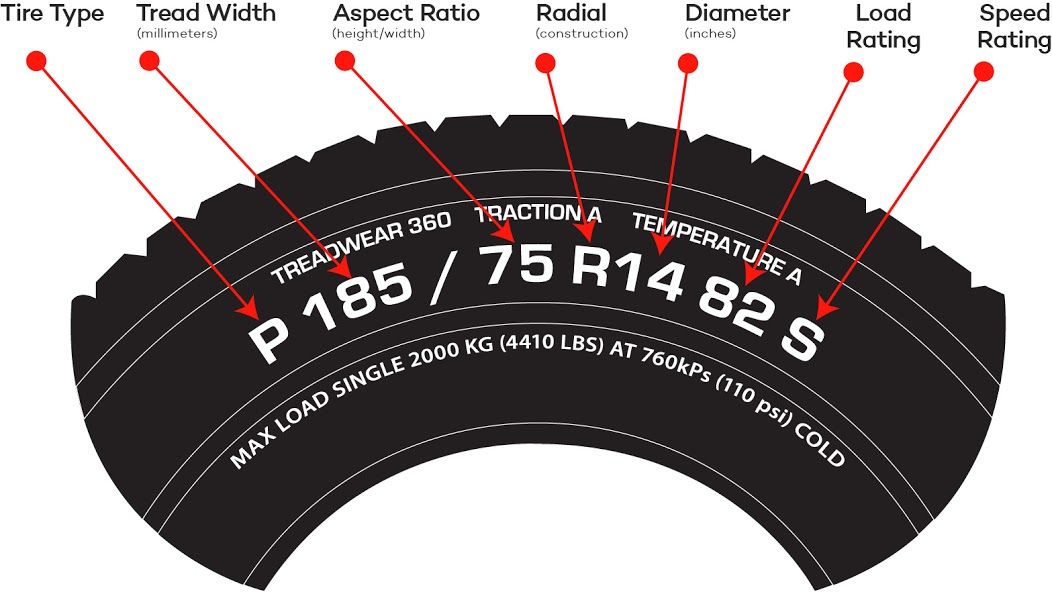 Be careful when changing wheel sizes because larger wheels affect the handling of the vehicle.
Be careful when changing wheel sizes because larger wheels affect the handling of the vehicle.
In the example tire, P235/75R15, the 15 at the end means you must install it on a 15-inch diameter wheel.
Following the size information, you will see two numbers and a letter. The numbers give the load rating for the tire, while the letter indicates the speed rating.
Using P215/65R15 85H as an example, the 85 gives the load index, also called the tire ply rating, and the H is for the speed rating, which tells you the maximum speed at which you should use the tires. This speed ranges from 3 mph to 186 mph.
Often, you will see a number and letter following the tire size. This set of information denotes the tire load and speed rating. On some tires, you may see three letters instead of one. The first gives the speed rating while the next two indicate the load range.
1. Tire Load Range and Tire Ply Rating
The tire load range is also known as ply rating — a term that dates back to the days of bias-ply tires, which had different numbers of ply layers. More layers indicated a better and stronger tire. Today, ply rating still refers to the strength of the tire, but since fewer, stronger plies are used, the numbers have been replaced by load range letters.
The load ranges for passenger tires have a listing beneath the tire code with information about the maximum load range and tire pressures. The load range indicates the heaviest load the tire can handle in pounds. Maximum tire pressure indicates the highest you can inflate the tires, but do not fill your tires to this pressure. It reflects the highest pressure the tire can handle when carrying its maximum load. Use the pressure given in your vehicle’s owner’s manual for the ideal tire pressure that creates the most comfortable and safest ride.
Light truck load ranges have letters B, C, D, E and F, and they have increasing maximum pressures. The lowest pressure is for B tires with 35 psi, and C has a pressure of 50 psi. The pressures increase in increments of 15 from 65 psi, 80 psi and 95 psi for tires with load ranges of D, E and F. For work trucks, the most common load ranges are C, D and E. Commercial trucks, which have much higher carrying requirements, have load ranges from F through L.
The lowest pressure is for B tires with 35 psi, and C has a pressure of 50 psi. The pressures increase in increments of 15 from 65 psi, 80 psi and 95 psi for tires with load ranges of D, E and F. For work trucks, the most common load ranges are C, D and E. Commercial trucks, which have much higher carrying requirements, have load ranges from F through L.
In some cases, you may see a number after the load range number, for example, C1 or C2. They still have the same number of plies, but the numbers designate differing max pressures.
If you see a pair of load ratings, the tire manufacturer did not make a mistake. Instead, these LT tires have the load ratings for dual tires. The first number gives the load index for the tires when used on single axles. The second number is how much the tire can handle when used on a dual axle.
For instance, if you see a 104/101 for the load index, this means the tire has an index of 104 when used by itself but only 101 when installed on a dual-tire axle.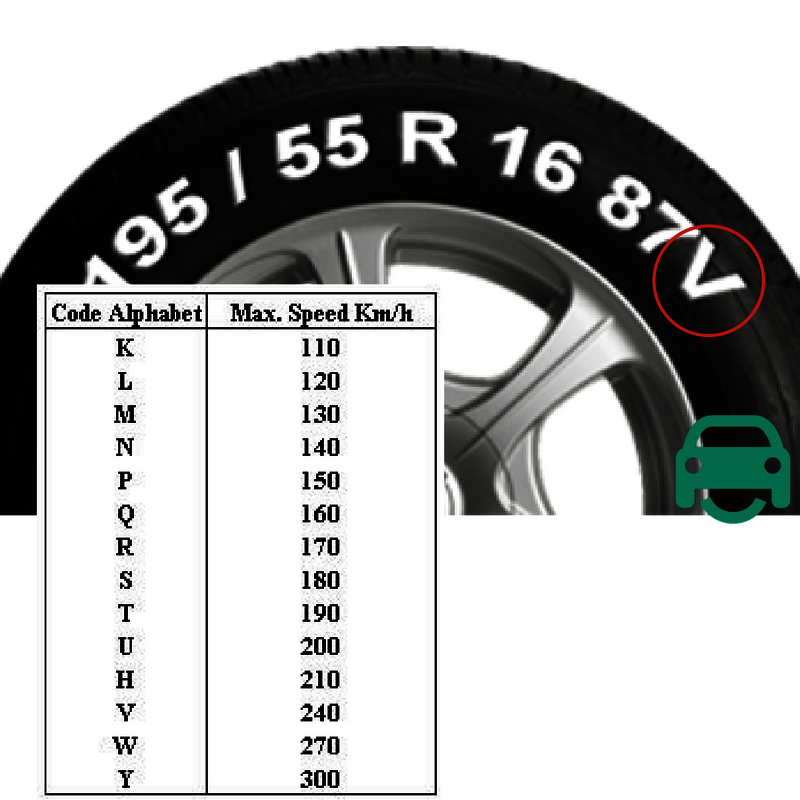 The second number is usually lower because of unequal load sharing when the tires are paired together. However, when the tire is acting by itself, it can support a higher weight.
The second number is usually lower because of unequal load sharing when the tires are paired together. However, when the tire is acting by itself, it can support a higher weight.
The load index on a tire gives a numerical value for the maximum weight the tire can handle when it is inflated to its recommended pressure. Higher numbers correlate to the tire’s ability to bear heavier loads. Indices start at 1, which can carry 102 pounds, and they go up to 150, which can hold up 7,385 pounds. In the example, P215/65R15 85H, the 85 load index means the tire can carry up to 1,135 pounds.
Like truck tire load ratings, the higher the load index, the more robust the tire is. Higher load indices correspond to tires used for hauling cargo or for installation on work trucks. No matter how strong the tire is, though, it’s important to remember to never carry weights that are heavier than your tires or vehicle’s suspension are rated for.
In addition to load ranges and indices, you also need to know about the speed ratings to keep your truck and cargo safe and to avoid damaging your tires. Just as tires have load indices to limit the amount they carry, they also have ratings for their maximum speeds. In the United States, most speed ratings on tires surpass the limits on highways. You should never exceed the posted speeds, regardless of the ability of your tires. Nor should you drive your truck faster than the tires’ speed ratings.
The speed rating has a designation after the load index number and before the load range letter if present. The lowest speed for tires is 75 mph for L rated tires. Only use these for off-road trucks that cannot reach high speeds due to the rough conditions. Keep in mind that speed ratings do not correlate alphabetically. See the speed ratings for various tires listed below and their standard vehicles:

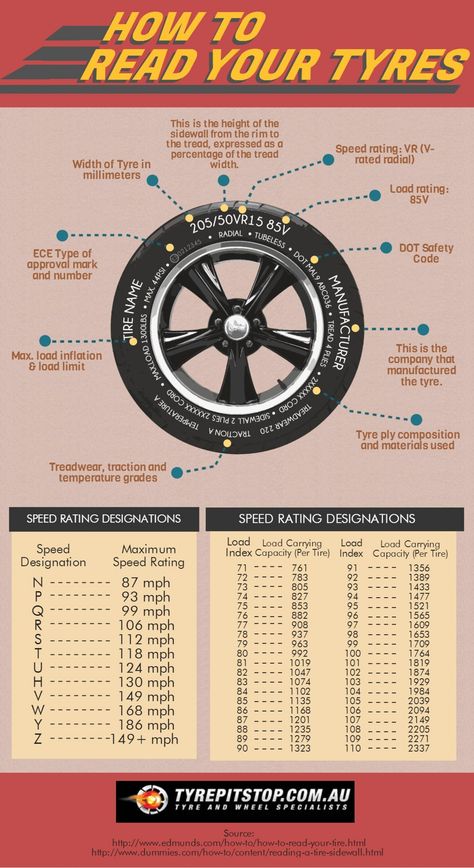
Typically, for work trucks, speed is not the most critical factor, which explains why a speed rating of R for heavy-duty trucks has a limit of only 106 mph. Those who drive sports cars or race usually require specialty tires built for speed. If you need to haul cargo, look for the load index or range, which will help you to identify the best tires for your operation.
In the example tire, P215/65R15 85H, the H indicates the speed index of up to 130 mph.
When you install tires onto your truck, choose tire sizes and load ratings recommended by the manufacturer. However, the size and strength of your tires you need for your vehicle will change if you customize it by adding on service bodies, platforms, tow hooks or other features. Ask us about the recommended chassis and tire loads needed for such additions to your truck. By pairing the right tires with your customized work truck, you will ensure peak productivity from the vehicle.
Ask us about the recommended chassis and tire loads needed for such additions to your truck. By pairing the right tires with your customized work truck, you will ensure peak productivity from the vehicle.
The tires you install on your truck are only one part of customizing your vehicle to your job. Service bodies and similar add-ons transform your purchased vehicle into a work machine. In fact, if you have a service body on your truck, you may need higher rated tires to hold up the extra weight you carry.
Find the service bodies and other ways to customize your truck to perform best at what you do by checking out our products at Reading Truck. If you have questions about the best options or want to create a customized work truck, contact us today.
Calculate Out-The-Door Price
close
When the super smart engineers designed and built your car, they crunched some numbers and determined exactly how much weight it could carry safely based on the right tire size and pressure. This is what we call the “tire load index.” The tires that come on your vehicle will have the proper load index, so stick to that number or higher when you purchase new tires. You can also check the vehicle’s manual to find the recommended tire size and load rating.
This is what we call the “tire load index.” The tires that come on your vehicle will have the proper load index, so stick to that number or higher when you purchase new tires. You can also check the vehicle’s manual to find the recommended tire size and load rating.
The tire load index tells you how much weight your tire can carry, and overloading your tires is never a good idea! When you put too much weight on your tires, you can cause damage and wear them down prematurely. Even worse, you run the risk of experiencing a tire blowout. Imagine trying to carry a box full of cement blocks. Just like your legs would buckle under the weight, your tires can completely give out if they’re overloaded.
The tire load index lets you know the load carrying capacity of a tire. In other words, it’s the amount of weight your tire can support safely.
For example, if a tire has a load index of 92, it can support 1,389 pounds at maximum air pressure. Multiply that by four tires (4 x 1,389 = 5,556 pounds) to get your car’s maximum load carrying capacity. Never install tires with a lower load carrying capacity than the original tires that were factory installed on your vehicle.
Multiply that by four tires (4 x 1,389 = 5,556 pounds) to get your car’s maximum load carrying capacity. Never install tires with a lower load carrying capacity than the original tires that were factory installed on your vehicle.
| Load- Carrying Capacity Index Ratings | |||||
|---|---|---|---|---|---|
| Load Index | Load (lbs) | Load Index | Load (lbs) | Load Index | Load (lbs) |
| 0 | 99 | 50 | 419 | 100 | 1764 |
| 1 | 102 | 51 | 430 | 101 | 1819 |
| 2 | 105 | 52 | 441 | 102 | 1874 |
| 3 | 107 | 53 | 454 | 103 | 1929 |
| 4 | 110 | 54 | 467 | 104 | 1984 |
| 5 | 114 | 55 | 481 | 105 | 2039 |
| 6 | 117 | 56 | 494 | 106 | 2094 |
| 7 | 120 | 57 | 507 | 107 | 2149 |
| 8 | 123 | 58 | 520 | 108 | 2205 |
| 9 | 128 | 59 | 536 | 109 | 2271 |
| 10 | 132 | 60 | 551 | 110 | 2337 |
| 11 | 136 | 61 | 567 | 111 | 2403 |
| 12 | 139 | 62 | 584 | 112 | 2469 |
| 13 | 143 | 63 | 600 | 113 | 2535 |
| 14 | 148 | 64 | 617 | 114 | 2601 |
| 15 | 152 | 65 | 639 | 115 | 2679 |
| 16 | 157 | 66 | 639 | 116 | 2756 |
| 17 | 161 | 67 | 677 | 117 | 2833 |
| 18 | 165 | 68 | 694 | 118 | 2910 |
| 19 | 171 | 69 | 716 | 119 | 2998 |
| 20 | 176 | 70 | 739 | 120 | 3086 |
| 21 | 182 | 71 | 761 | 121 | 3197 |
| 22 | 187 | 72 | 783 | 122 | 3307 |
| 23 | 193 | 73 | 805 | 123 | 3417 |
| 24 | 198 | 74 | 827 | 124 | 3527 |
| 25 | 204 | 75 | 852 | 125 | 3638 |
| 26 | 209 | 76 | 882 | 126 | 3748 |
| 27 | 215 | 77 | 908 | 127 | 3858 |
| 28 | 220 | 78 | 937 | 128 | 3968 |
| 29 | 227 | 79 | 963 | 129 | 4079 |
| 30 | 234 | 80 | 992 | 130 | 4189 |
| 31 | 240 | 81 | 1019 | 131 | 4289 |
| 32 | 247 | 82 | 1047 | 132 | 4409 |
| 33 | 254 | 83 | 1074 | 133 | 4541 |
| 34 | 260 | 84 | 1102 | 134 | 4674 |
| 35 | 267 | 85 | 1135 | 135 | 4806 |
| 36 | 276 | 86 | 1168 | 136 | 4938 |
| 37 | 282 | 87 | 1201 | 137 | 5071 |
| 38 | 291 | 88 | 1235 | 138 | 5203 |
| 39 | 300 | 89 | 1279 | 139 | 5357 |
| 40 | 309 | 90 | 1323 | 140 | 5512 |
| 41 | 320 | 91 | 1356 | 141 | 5677 |
| 42 | 331 | 92 | 1389 | 142 | 5842 |
| 43 | 342 | 93 | 1433 | 143 | 6008 |
| 44 | 353 | 94 | 1477 | 144 | 6173 |
| 45 | 364 | 95 | 1521 | 145 | 6393 |
| 46 | 375 | 96 | 1565 | 146 | 6614 |
| 47 | 386 | 97 | 1609 | 147 | 6779 |
| 48 | 397 | 98 | 1653 | 148 | 6844 |
| 49 | 408 | 99 | 1709 | 149 | 7165 |
| 150 | 7385 | ||||
As you can tell, the tire load index is massively important when you’re shopping for new tires.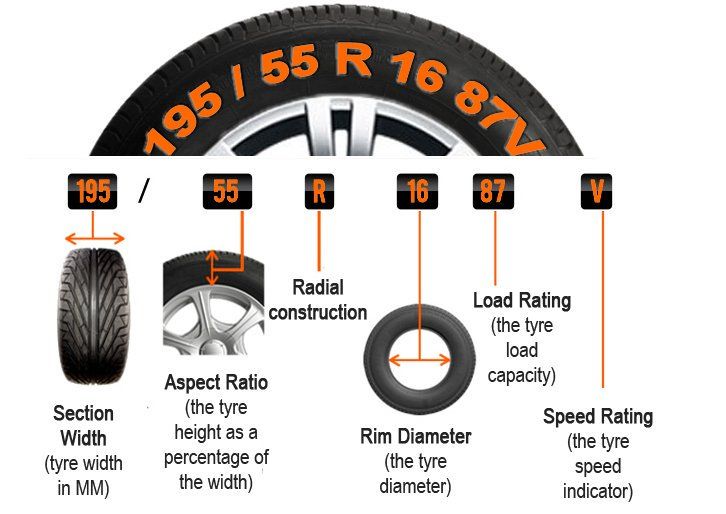 When it’s time to select new tires for your vehicle, you must select tires that can support your car’s Gross Vehicle Weight Rating (GVWR). This number can be found in the owner’s manual. To determine if a set of tires will work on your particular car, use the tire load index chart to see how many pounds each tire can support. Multiply that by four (since your vehicle will use four tires). As long as that number is greater than the GVWR of your vehicle, those tires should work. If you think that sounds like a lot of math, don’t worry. Sit back, relax, and let the expert of Tires Plus do the hard work for you. Schedule your appointment for brand new tires today!
When it’s time to select new tires for your vehicle, you must select tires that can support your car’s Gross Vehicle Weight Rating (GVWR). This number can be found in the owner’s manual. To determine if a set of tires will work on your particular car, use the tire load index chart to see how many pounds each tire can support. Multiply that by four (since your vehicle will use four tires). As long as that number is greater than the GVWR of your vehicle, those tires should work. If you think that sounds like a lot of math, don’t worry. Sit back, relax, and let the expert of Tires Plus do the hard work for you. Schedule your appointment for brand new tires today!
{{storeNumber}}
{{storeName}}
{{link-icon "Call Us" mobileCallLink null "call-cta"}} {{link-icon "Directions" directions "_blank" "directions-cta"}}
{{address}}
{{city}}, {{state}} {{zip}}
{{#if activeFlag}} {{#ifCond mystore "or" myPreferredStore}} {{#ifCond storeType 'eq' "TPL"}}
*Call store for appointment {{phone}}
{{else}} {{#if onlineAppointmentActiveFlag }}
{{#if myPreferredStore}}
{{else}}
*Call store for appointment {{phone}}
{{/if}} {{/ifCond}} {{else}} {{#ifCond storeType 'eq' "TPL"}}
*Call store for appointment {{phone}}
{{else}}
Schedule Appointment {{#if onlineAppointmentActiveFlag}} {{else}}
*Call store for appointment {{phone}}
{{/if}}
{{/ifCond}} {{/ifCond}} {{else}}
*Temporarily Closed Due To: {{temporarilyClosedReason}}
{{/if}} {{#if isMilitaryStore}}
*This location is on an active US military base.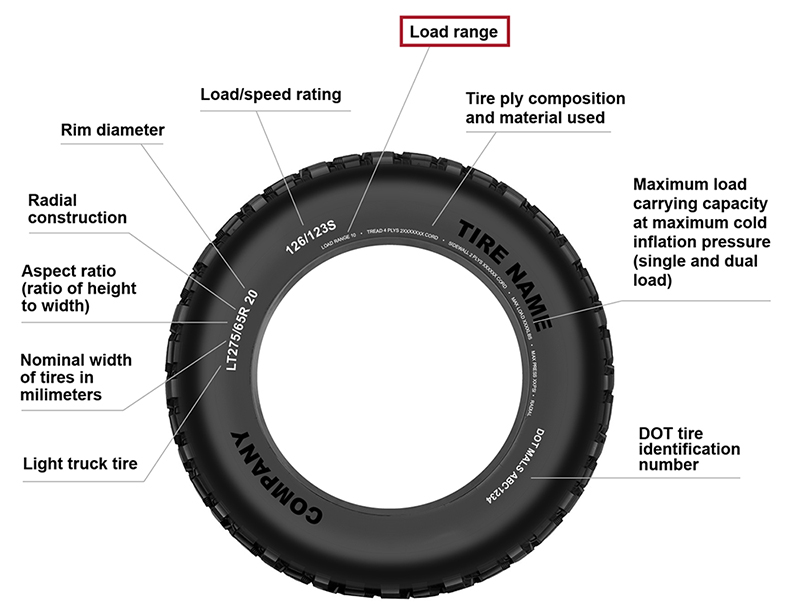 You may need military ID to access the location.
You may need military ID to access the location.
{{/if}}
{{#ifCond count 'eq' "3"}} Show More Stores {{/ifCond}}
The sidewall of a tire has all the information you need to know about it. Below you will find a small guide to deciphering all these numbers and letters.
Tire width from side to side in mm.
Ratio of the section height of a tire to its width, expressed as a percentage. For example, a profile height of 65 means that the height of the tire is 65% of its width
Wheel diameter (height) in inches.
The maximum load per tire (in kg) depends on the load index.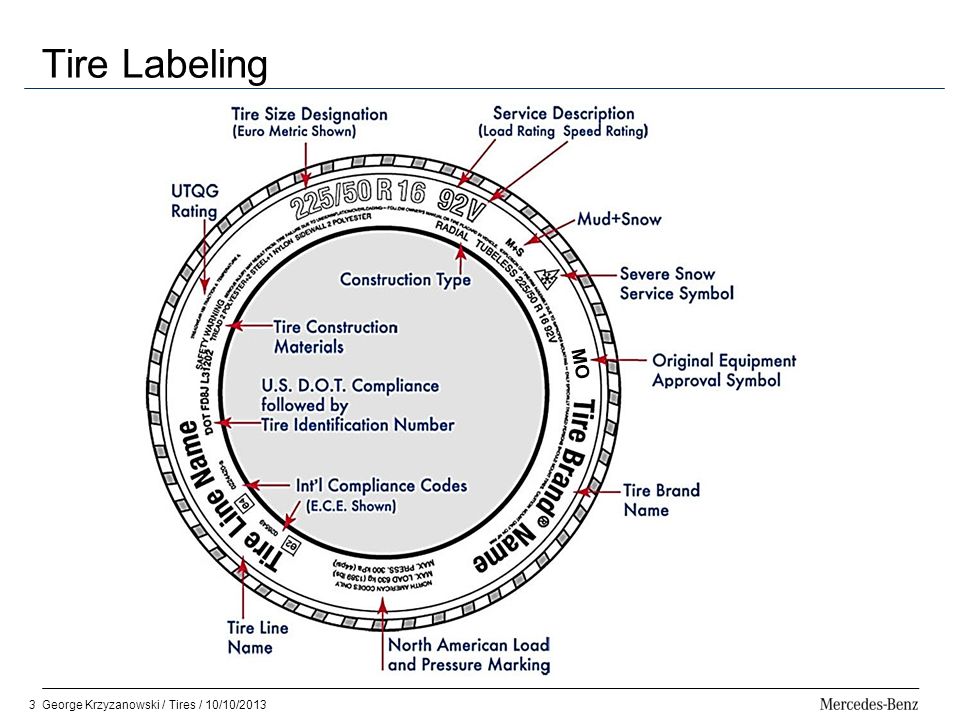 The load index value is printed on the sidewall of the tire to the right of the diameter value.
The load index value is printed on the sidewall of the tire to the right of the diameter value.
For example, for a tire with a load index of 91, the maximum load is 615 kg.
When buying new tires, consider the load and speed indexes in combination. In addition, you should always follow the recommendations of your vehicle manufacturer.
The Speed Index is the maximum allowable speed at which a properly inflated tire can be driven under load. The speed index, indicated by a letter, is located after the load index on the sidewall of the tire. For example, for a tire with a speed index of V, the maximum speed is 240 km/h.
When buying new tires, it is important to consider that their speed rating matches the vehicle's speed capabilities.
Your vehicle may be compatible with tires with load and speed ratings that differ from those specified in the manufacturer's documentation.
However, it is always worth checking first whether the vehicle manufacturer allows the installation of such tires and whether their operation is permitted by the current legislation. Always comply with all legal requirements in your country regarding the characteristics of the tires used, and also take into account the recommendations of the vehicle manufacturer regarding speed and load. If necessary, consult your dealer before purchasing or installing tires.
Is it possible to use tires with higher speed ratings than those recommended by the car manufacturer?
Yes, you can. However, it is always worth checking first whether the vehicle manufacturer allows the installation of such tires.
Can tires with higher load indexes be used than those recommended by the car manufacturer?
Yes, you can. However, it is always worth checking first whether the vehicle manufacturer allows the installation of such tires.
Can tires with higher speed and load ratings be used than recommended by the car manufacturer?
Yes, you can.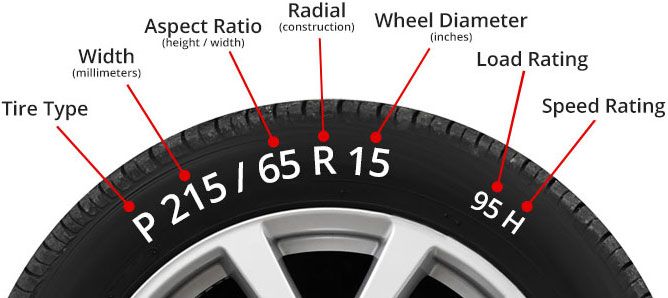 However, it is always worth checking first whether the vehicle manufacturer allows the installation of such tires.
However, it is always worth checking first whether the vehicle manufacturer allows the installation of such tires.
Can tires with lower speed ratings be used than those recommended by the car manufacturer?
Yes, it is possible. These can be all-season or winter (M+S) tires with a lower speed index, if: a) a sticker indicating the maximum speed limit is in the driver's field of vision; b) the driver does not exceed the specified maximum speed limit. However, it is always worth checking first whether the vehicle manufacturer allows the installation of such tires and whether their operation is permitted by the current legislation.
Can tires with higher load indexes and lower speed indexes be used than recommended by the car manufacturer?
Yes, it is possible. These can be all-season or winter (M+S) tires with a lower speed index, if:
a) a sticker indicating the maximum speed limit is in the driver's field of vision;
b) the driver does not exceed the specified maximum speed limit.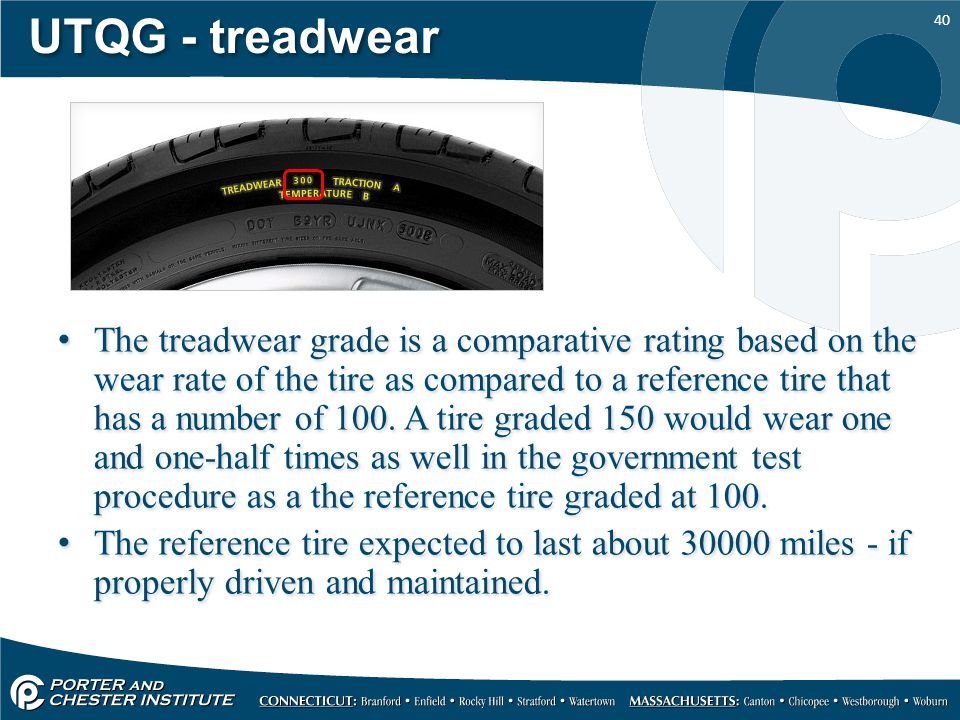 However, it is always worth checking first whether the vehicle manufacturer allows the installation of such tires and whether their operation is permitted by the current legislation.
However, it is always worth checking first whether the vehicle manufacturer allows the installation of such tires and whether their operation is permitted by the current legislation.
Refer to the vehicle owner's manual for load limits. Overloading a vehicle puts unnecessary stress on its tires and other structural elements. This can lead to poor handling, increased fuel consumption and tire damage. Tires may develop large cracks, defects or tears.
The presence of the letter "P" or the absence of letters indicates that this is a tire for a passenger car.
The letter "R" stands for radial construction. Most tires manufactured today are radial.
This mark indicates that the tire meets the United Nations Economic Commission for Europe (UNECE) standards for pneumatic tyres.
This is the maximum pressure for your tire. Check your vehicle's owner's manual for recommended tire pressures, which affect your vehicle's handling, cornering and braking behavior, and fuel consumption.
The letters "TWI" indicate the location of the tire tread wear indicators. You should regularly pay attention to them in order to monitor the degree of tread wear. In most European and Customs Union countries, the minimum permitted tread depth is 1.6mm.
The four-digit code indicates the week and year of manufacture of the tire.
Speed indices:
Speed index indicates the manufacturer's recommended maximum speed for this tire. Symbols of the English alphabet are used as a designation, each of which corresponds to a certain speed indicator.
| Index | Speed, km/h | Index | Speed, km/h |
| L | 120 | U | 200 |
| M | 130 | H | 210 |
| N | 140 | V | 240 |
| P | 150 | W | 270 |
| Q | 160 | Y | 300 |
| R | 170 | VR | >210 |
| S | 180 | ZR | >240 |
| T | 190 | ZR (Y) | >300 |
Load indices:
Load index , indicated by a number on the sidewall, is the maximum permissible load on one tire of a vehicle in running order, under the pressure of which the tire is able to function normally when driving at the maximum permissible speed.